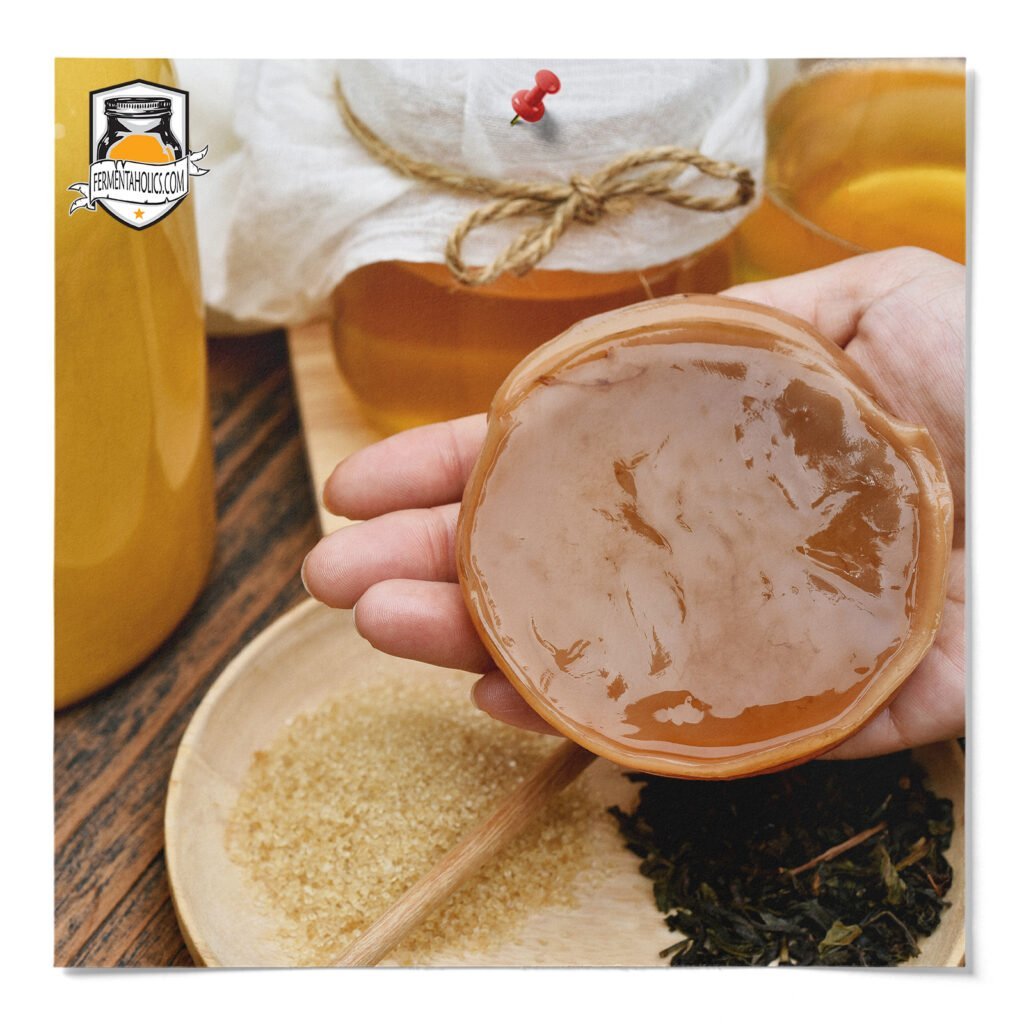
When you google, “What is a SCOBY,” you’ll often get the same answer from 30,000 feet. “A S.C.O.B.Y. is an acronym which stands for Symbiotic Culture of Bacteria and Yeast and is the culture that transforms sweet tea into kombucha.”
Well, the kombucha culture or SCOBY is a colony of living bacteria and yeast. When looking at a SCOBY, you will usually be looking at liquid kombucha starter tea and a kombucha pellicle. The B.Y. in SCOBY, the bacteria and yeast, are microscopic, so you can’t see them. But they are there, living in both the liquid of the kombucha starter tea and the kombucha pellicle.
Pretty straight forward, right? Well, we’re not done. Adding to this, the kombucha pellicle or cellulose mat is almost always called the SCOBY. This is where it gets a little confusing. So let’s rephrase the above sentence with this logic.
See where we are going with this? The word SCOBY being used interchangeably can get confusing. You may find yourself having two different conversations without clarification. This post isn’t necessarily meant to be a lesson in semantics as the dual usage is commonplace. We say call it whatever you want, but it’s essential to understand the difference. Let’s do it again;
Now that we understand the difference, let’s go over each one.
“Kombucha Starter Tea” is a raw aged kombucha that contains the living bacteria and yeast needed to brew kombucha. This liquid kombucha culture is usually taken from a previous batch of kombucha and is then used to kick start a new batch of kombucha, hence the name starter tea. Starter tea is a phrase that differentiates matured kombucha from freshly inoculated, particularly referencing the matured kombucha that is used as the inoculum for a new batch of kombucha.
As we went over previously, the pellicle goes by many names. It is called the SCOBY, the mother, the baby, mushroom, biofilm, or cellulose mat, to name a few. When brewing kombucha, the bacteria in the culture will build a structure on the surface of your brew. The pellicle will start paper-thin and slowly thicken over time. Once the fermentation is complete, along with starter tea, you remove this structure (pellicle) and reserve to innoculate a future batch of kombucha. Despite what you may have read, the pellicle itself isn’t alive; it’s a cellulose structure made by “certain” cellulose-forming bacteria living in the culture during fermentation. It’s a byproduct of the kombucha brew. The reason for the bacteria forming this structure isn’t wholly understood. The two schools of thought are that the bacteria are attempting to seal off their food source from outsiders and to block out light. While visible, the structure isn’t alive, living bacteria and yeast do reside in it and are abundant in the liquid starter tea around it. It’s easiest to think of the pellicle as a non-living structure loaded with your beneficial bacteria and yeast.
